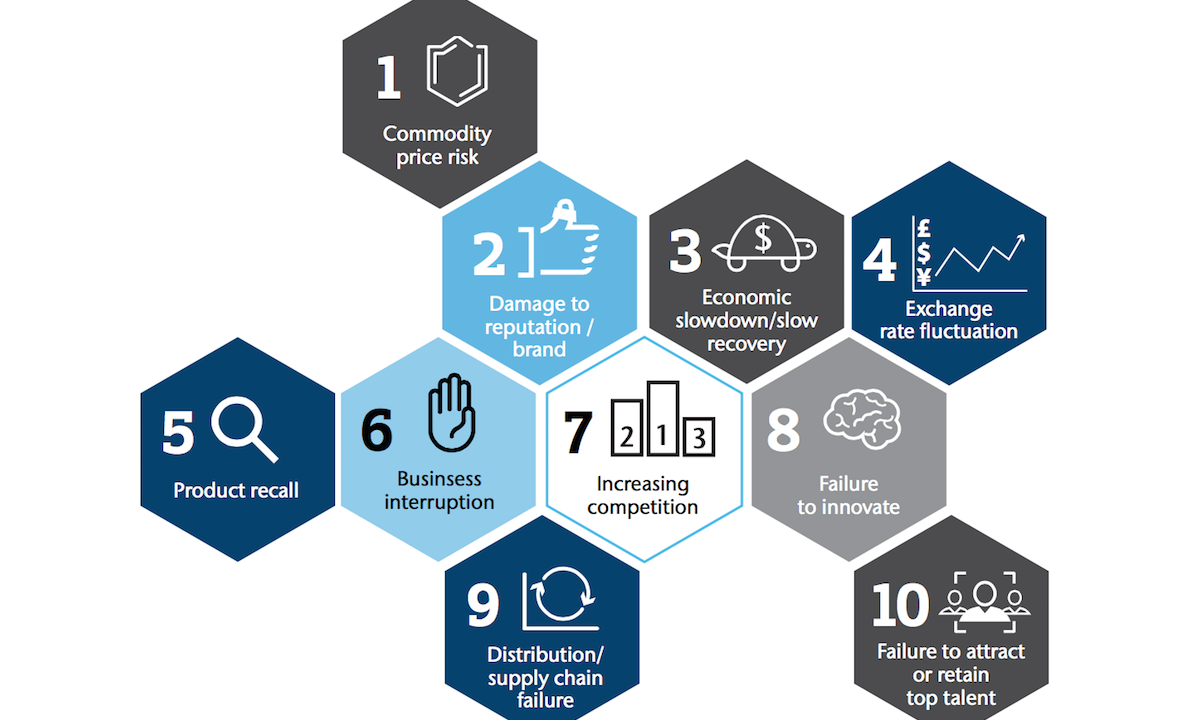A new report has found that the biggest threat to the Irish agri-food sector, in light of Brexit, is fluctuations in the exchange rate.
The report, ‘Competitiveness of Food & Agri-Businesses at Risk from Brexit’ by risk management company Aon, found that extreme currency movements threatening to eat into thin profit margins, according to theFood, Agribusiness and Beverage Risk Insights Survey 2016.
The survey of companies, with a combined turnover in excess of €26bn, found 58% identify exchange rate fluctuation as one of the Top Ten Risks they face.
Some 41% of all Irish food exports are exported to the UK, and the Brexit vote will challenge the sector as it copes with the slide in the value of sterling and the extreme uncertainty about how future trading relationships will evolve.
Food & Agri-Business Practice Leader at Aon, Ciara Jackson, and author of the report Brexit has the potential to severely challenge the competitiveness of the Irish food & agri-business sector.
“The UK’s importance as an export destination for Irish produce means that the collapse in the value of sterling (making Irish exports more expensive) could particularly hurt lower margin businesses where profits can quickly swing to losses.
“Prior to the vote, 58% of companies identified exchange rate volatility as a Top Ten Risk, I suspect after recent events that percentage will now be much higher. On a more positive note, this is a sector that is rapidly diversifying its export markets, moving up the value chain, and has proven extremely resilient in the face of past challenges.”
The survey also found that companies are poorly prepared for the risks they face. At best, 50% of respondents had prepared for the two most significant risks identified, which were the impact of commodity price volatility and damage to reputation and brand. For the eight other categories, preparedness levels were all below 50%, with addressing the risk of losing top talent the lowest at just 5%.

The 10 top risks in light of Brexit – Aon.
1. Commodity Price Risk: Prices for commodities have been particularly volatile of late, in many cases driven by extreme weather events. 50%
2. Damage to Reputation & Brand: While damage to brand and reputation in itself is not insurable, many of the factors which cause the damage are, including the impact of product contamination and fraud. 50%
3. Economic Slowdown/Slow Recovery: Economic uncertainty remains uninsurable, but companies can mitigate it through diversification and cost control. 23%
4. Exchange Rate Fluctuation: Sterling weakness in the face of Brexit risk has been a key challenge, with 41% of Irish agri-food and drink exports going to the UK. 41%
5. Product Recall: Considerable costs can be incurred in recalling a product, including replacing or destroying the product itself, and rebuilding brand confidence after the event. 36%
6. Business Interruptions: Business Interruption (BI) insurance helps you get your business up and running again in the shortest time possible. Cyber security damage is an increasing feature of BI risk. 45%
7. Increasing Competition: Irish food businesses compete on the global stage and require lean and efficient cost bases to ensure that they can succeed. 32%
8. Failure to Innovate: Continuous innovation needs to be informed by deep and clear consumer insights, with both Glanbia (performance nutrition) and Kerry Group (healthy snacking – Cheesestrings) a good example of Irish companies putting this into practice. 41%
9. Distribution/Supply Chain Failure: Supply chains have to be leaner, more efficient, more flexible and more agile than ever before. As supply chains become longer and more complex, the risk of failure across the chain increases. 18%
10. Failure to attract or retain top talent: Many FAB businesses by their very nature are located outside the main urban centres. Competition for talent is intense, in particular from the well-established tech and pharma sectors. 5%

